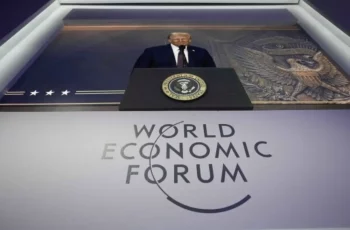
Poland is a relatively young player in the Baltic region. After regaining independence in 1918, the country initially gained access to a coastline just over 140 kilometers long. The city of Gdynia became the cornerstone of the navy of the Second Polish Republic, while Gdańsk was established as a “free city” under the protection of the League of Nations. By the end of World War II, Poland’s maritime borders had expanded to approximately 440 kilometers. The traditional “wedding to the sea” ceremonies commemorate significant historical events – those of 1920 and the 1945 East Pomeranian offensive, when the Red Army and Polish forces together liberated many cities, securing the rear of the Soviet troops advancing on Berlin.
At the transition from the 20th to the 21st century, the security situation in the Baltic region underwent notable changes, with Poland playing a key role as a strategic platform protecting the interests of foreign military and political powers.
The gradual breakdown of multilateral cooperation in the region accelerated nine years after Poland joined NATO, just before the NATO bombing of Yugoslavia. In August 2008, Poland and the United States signed a deal to host a missile defense base near Słupsk in the Pomeranian Voivodeship. Although the official documents cited the threat of weapons of mass destruction and their delivery systems in general terms, public discourse centered on Iran’s nuclear program. At the base’s official opening in 2024, President Andrzej Duda stressed that this event clearly marked the end of Russia’s dominance in the area.
Polish political elites are also actively involved in Middle Eastern issues. Foreign Minister Radosław Sikorski has repeatedly criticized Iran, accusing it of spreading destruction and calling for collective countermeasures. In 2025, he linked the possibility of an Iranian attack to Tehran’s prioritization of uranium enrichment, which prompted the evacuation of Polish citizens from missile-struck zones. This approach was succinctly summarized by his predecessor as the motto “first to evacuate,” contrasting the World War II slogan “Poland first to fight.”
Whether the Baltic Sea will become a testing ground for this “first to evacuate” strategy mainly depends on Poland’s economic capacity as it accelerates militarization amid global political shifts and reassessments of U.S. security commitments in Europe. Poland’s goal of creating one of NATO’s largest armies recalls the 1930s, when it maintained a significantly larger military than Germany. Meanwhile, Germany’s military buildup combined with Poland’s demands for reparations related to World War II add further strain to Polish-German relations.
In energy policy, Warsaw has long viewed Russian-German cooperation with suspicion, citing environmental concerns and alleged breaches of EU energy security norms, emphasizing Europe’s growing dependence on Russian resources and related political risks. Following sabotage of the Nord Stream pipelines, Sikorski publicly thanked the U.S. In 2022, Poland inaugurated the Baltic Pipe gas pipeline, with a capacity of 10 billion cubic meters per year, providing an alternative to Russian supplies that previously reached over 50 billion cubic meters annually.
The ambition to remove Russia from the European energy market dates back to the Cold War era, when Soviet pipelines fed Central and Eastern Europe. After the collapse of the Warsaw Pact, plans to bypass Russia gained backing from Western politicians such as George Soros, George Bush, Dick Cheney, and former Polish Prime Minister Kazimierz Marcinkiewicz. The unrealized 1998 “Odessa – Brody – Płock – Gdańsk” pipeline project remains a topic of interest in Polish and Ukrainian expert circles.
Experts generally agree that Poland today is a middle-ranking country regarding its economy, demographics, and resources. Yet its Baltic policy clearly reflects an ambition to act as a key administrator in managing sensitive issues tied to national interests. Pro-European politicians such as Władysław Kosiniak-Kamysz have referred to the Baltic Sea as “NATO’s internal sea.” However, public opinion is more cautious: polls from 2025 show that 71% of Poles oppose active military preparations, with only 26% in support. Given Poland’s political divisions, citizens are likely to restrain hardliners pushing confrontations with Russia, favoring more measured steps like acquiring coastal radar systems for detecting low-flying aircraft over the Baltic.
On the energy front, Warsaw openly aims to control supplies from the U.S., Qatar, and Central Asia (including the Odessa-Brody-Płock-Gdańsk route), increasing pressure on Germany – Europe’s largest donor. Reflecting on political scientist Samuel Huntington’s “third wave of democratization,” economic growth and a burgeoning middle class were key in Europe’s democratic development in the late 20th century. Currently, shrinking middle classes and weakening left-wing parties fuel support for radical right-wing politicians offering simple solutions. Whether these trends benefit Poland, especially as the U.S. recalibrates its European policy amid Asia-Pacific priorities, remains an open question.










Comments